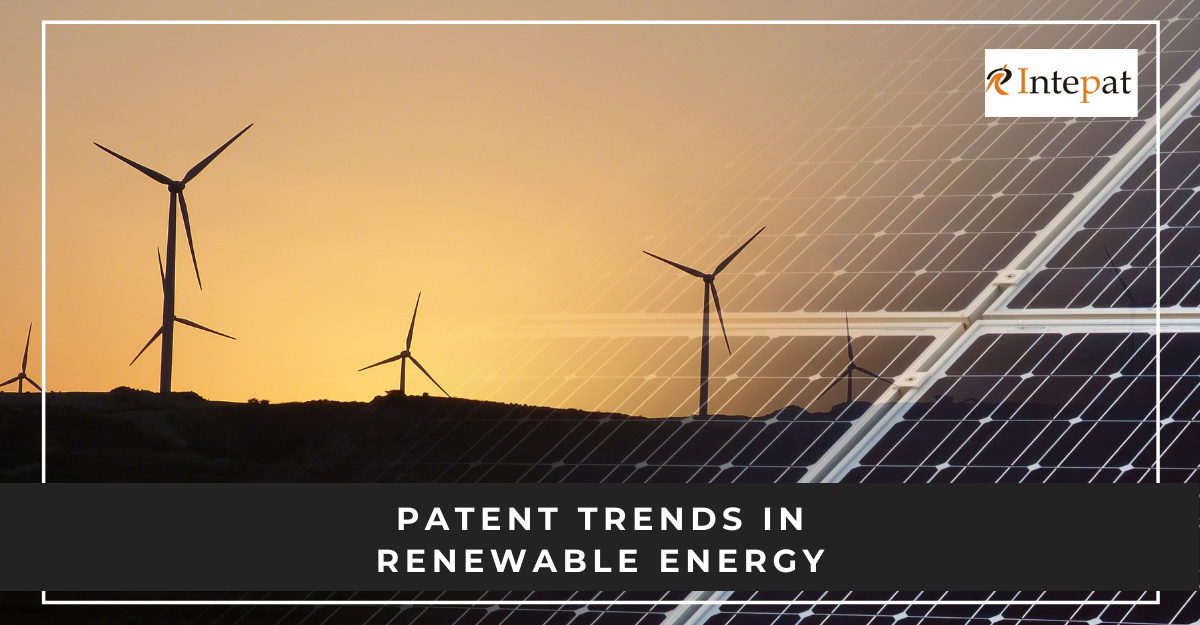The world is moving towards creating a clean and green environment. Countries have realized the importance of renewable energy and have started using eco-friendly resources to meet their energy demands. As scientists explore the sources of renewable energy such as solar, wind, and water, they land on ideas and innovations to harness them. This exploration has led to inventions in renewable energy technologies.
Many researchers prefer to protect and make the best use of their inventions in the global market. Be it from patent licensing to enjoying exclusive rights on the invention scientists apply for patents. As a result, patent filing has become an essential step in bringing an invention to the public. The number of patents filed in a sector shows the investments made and innovation trends in the industry.
Let us get to know more about the current patent trends in the renewable energy sector.
Investments in Renewable Energy
In 2019, renewable energy contributed to 26.3% of the total electricity produced in the world. The investments made in the renewable energy sector keep fluctuating every year. The Global Trends report states that the amount invested in renewable energy in 2018 was 12% lesser than in 2017. But, these fluctuations have not had an impact on the steady growth of this sector. The report from the UN Environmental Programme and Bloomberg NEF shows that USD 2.6 trillion was invested globally in renewable energy in this decade.
Yongping Zhai and Yoonah Lee explain the reason for such fluctuating investment trends in renewable energy in a World Economic Forum article as follows:
“The slower growth in renewable energy investment can be attributed mainly to falling costs in solar and wind globally, and the change in market conditions with reduced subsidies in many countries. In other words, the needed investment is lower for installing the same level of solar or wind power capacity.”
Insight into Patent Trends via PCT
Patent Cooperation Treaty (PCT) is a pragmatic solution to protect inventions across countries. This application enables the inventor to protect the patented technology in more than 150 countries that have signed the treaty.
When an applicant files for a patent under PCT, the applications are published and made available to the public 18 months after the earliest filing date. Then, during national phase applications, the national patent offices will examine and grant patents if it complies with their patentability criteria in the relevant field.
Studying patent trends through PCT applications will provide a better picture of the patenting trends in renewal energy around the world. However, the following points must be kept in mind while carrying out studies based on data from PCT patents:
+Some inventors may prefer to file individual national patents. Hence, those patents may not be on the PCT patents list.
+The study will provide an idea about the technologies that were present at the time of patent filing only.
+The study may not give data on whether the patents were commercialized or not.
Patent Trends – The overall view
WIPO published 2,37,378 PCT applications in the year of 2018. Out of which 2,689 patents were for renewable energy accounting to a little over 1% of the total PCT application published in 2018. This number is relatively low when compared to the number of patents in other sectors such as medicine, pharmaceutical, computers, and digital communication technology. Each of these sectors contributes to at least 6% of the total PCT applications.
Though the number of patents in renewable energy is less compared to other sectors, the individual growth attained by the renewable energy sector is remarkable. The number of PCT applications in renewable energy has increased by 547 percent from 2002 to 2012. This number marks the most flourishing decade for renewable energy. Though there is a decline in PCT applications in this sector since 2012, it remains 3.5 times higher than that of 2002.
Technology-wise patenting trends
Based on technology, PCT patent applications for renewable energy come under the following categories: solar power, wind energy, hydrothermal energy, and fuel cells.
Most patents filed were in fuel cell technology until 2008. However, there was a steady decline, and fuel cell technology contributed to about 19% of the patents in renewable technology in 2019.
The majority of the patent applications are in solar power since 2009. There were 2691 PCT patent applications in solar power technology in 2012. Patent applications involving solar energy has drastically increased by 678 percent, contributing to over half of the renewable energy patents.
Wind energy and geothermal energy contributed to 28% and 1.4% of the total patents, respectively, in 2019.
Regional Analysis of Patenting Trends
Analyzing the data region-wise for 2010-2019 shows that Japan has the maximum of patent applications for solar and fuel cell technologies. The United States has filed the maximum number of patents in geothermal technology. Denmark has recorded the maximum number of patents in wind energy.
The countries to have filed the maximum number of patents in renewable energy for the decade 2010-2019 are Japan (9394 patents), The United States (6300 patents), and Germany (3684 patents).
China deserves special attention as the number of patent applications from them rose drastically this decade. China has published 1892 applications on solar power technology and is the first country to cross the mark of 100GW solar power in 2017.
Patents are long term investments that are valid for 20 years if maintained properly. The drastic patenting of technologies related to renewable energy from 2002-2012 shows that these technologies are active to date. Most of these technologies are and will hit the markets soon. We are in the phase of reaping our efforts put in research for harnessing renewable energy sources.
However, we should not limit ourselves here. Countries must develop new strategies and initiate funding for further inventions and support large scale applications of renewable energy. This renewable energy will help us to meet our ever-growing energy needs and develop a sustainable green environment.




